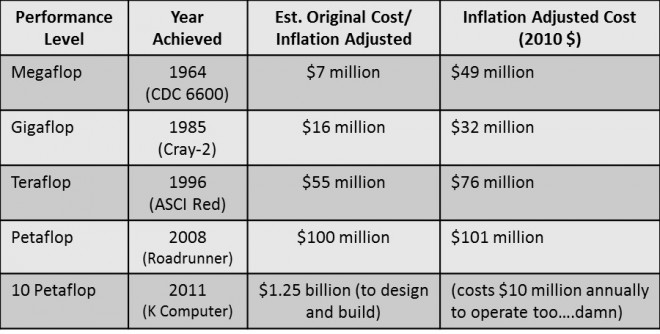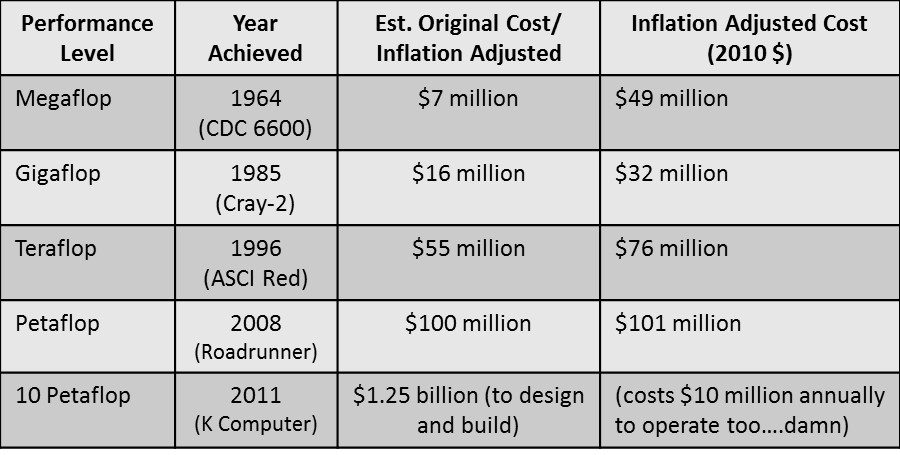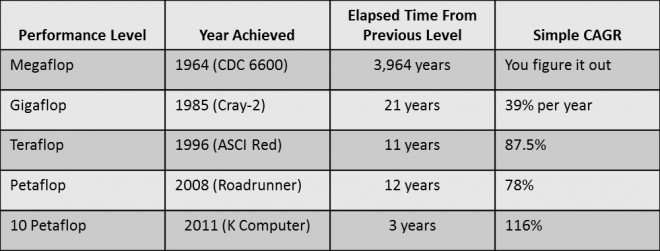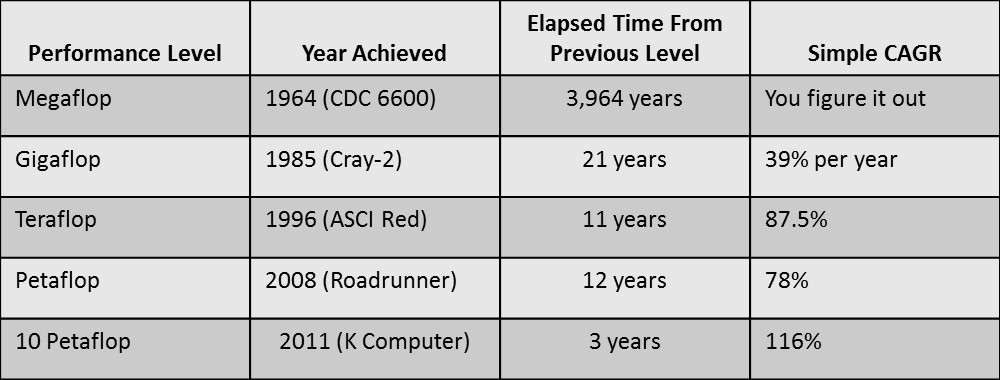My article on The Register comparing supercomputer performance and price/performance to common computers here generated quite a few comments. Most of them were the typical mix of humor, flames, and thoughtful asides, but one in particular caught my eye. It was from “buzza,” who mused:
“The K machine is mighty pricey, and it would (be) interesting to see how that cost breaks down into CPU vs I/O development. The K machine has a very elaborate interconnect. This must surely take a lot of the credit for the machine’s sustained performance being so close to the theoretical peak performance. The cost break down might illustrate where investment pays off best.”
For those who didn’t see the initial story, the Fujitsu K computer is a 10 petaflop monster that’s currently the fastest computer in the world. It’s roughly 4x faster than the second place Tianhe-1A Chinese system that topped the chart at the end of 2010.
The K computer delivers incredible performance but also an equally incredible price tag at $1.25 billion to build and $10 million annually to operate. (Read more below…)
Read More




